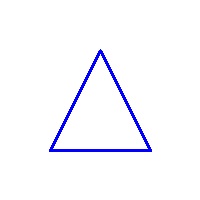The Gift of the Telescope:
Galileo had help from a new invention—the telescope. A Dutchman, Hans Lippershey, an eyeglass maker, is credited with making the first telescope in 1608. At least he was the first to apply for a patent. In 1609 Galileo improved the design of the telescope and was the first to point it toward the moon and the stars. He even discovered sun-spots on the sun. From his observations he was convinced of the truth of the sun-centered Copernican model of the revolution of the planets. Galileo compiled his findings in a book Dialogue Concerning the Two Chief World Systems, Ptolemaic and Copernican and presented it to the Pope in Rome for review. At that time, however, the Church still being fixed in its theological ideas, considered Galileo’s ideas and observations as heretical. So Galileo was called before the Inquisition in 1633. By that time a counter-reformation had been started by the Church—due to the protests of Martin Luther over a hundred years earlier—so the Church had to come down hard on Galileo and sentenced him to house arrest until his death in 1642.
But Galileo’s fate was mild compared to that of Giordano Bruno (1548—1600). Bruno also agreed with Copernicus about the sun-centered galaxy of planets. As historian Jacques Barzun described his life: “He was an able psychologist who wrote on memory, on the imagination, on the religious impulse as the source of cosmologies. Long protected by princes and cities for his skill in magic, Bruno was at last accused of heresy by the Inquisition. He recanted, was imprisoned for eight years, and then re-examined. This time he did not recant and was burned alive in the year 1600”.6 The Church was not to be defied and these actions struck fear in the hearts of many intellectuals and activists of the day. Such was the formidable wall facing the spiritual Hierarchy in the 16th century.
However, the new force that was spreading which helped surmount that wall and create a significant spark to the awakening of public consciousness was the growth of Humanism, mentioned earlier. The philosophy of Plato, Aristotle and Cicero “dealt with the affairs of the world in a man-centered way”…they were for the ancients “guides to life…rather than subordinate to the overriding scheme that put off human happiness to the day of judgment”.7 Out of this outlook on life emerged the theme of secularism. This style of free thinking, to quote Barzun, “opened a vista on the goals that could be reached on earth: individual self-development, action rather than pious passivity, a life in which reason and will can be used both to improve worldly conditions and to observe the lessons that nature holds for the thoughtful”.8 This was an inspiring philosophy for those who desired to break away from the dominating structures of the Church. In effect it was the beginning of widespread public education—a new expression of group work. It thereby developed in the people the intellectual power to match that of the Church. The humanists saw their repossession of a great past [ancient Rome] as a Renaissance—a rebirth of civilization itself. (Please note: a rebirth of a civilization seems to imply the return of the same group of souls who initiated the previous civilization, to continue the refining process).
6 Jacques Barzun, From Dawn to Decadence, p. 194
7 Ibid, p. 44
8 Ibid, p. 44
(to be continued)

